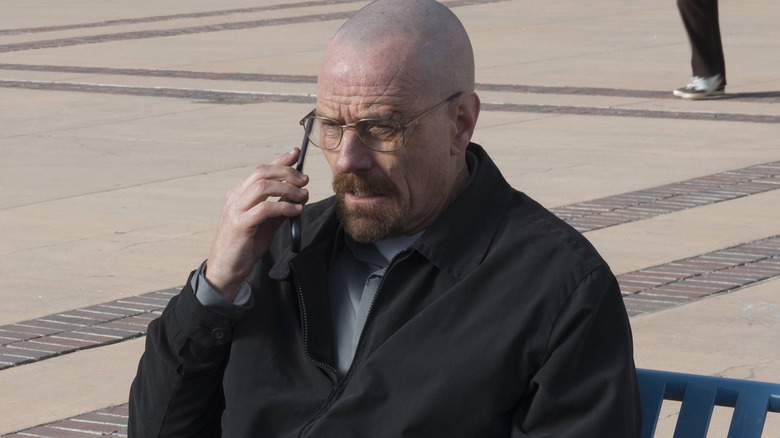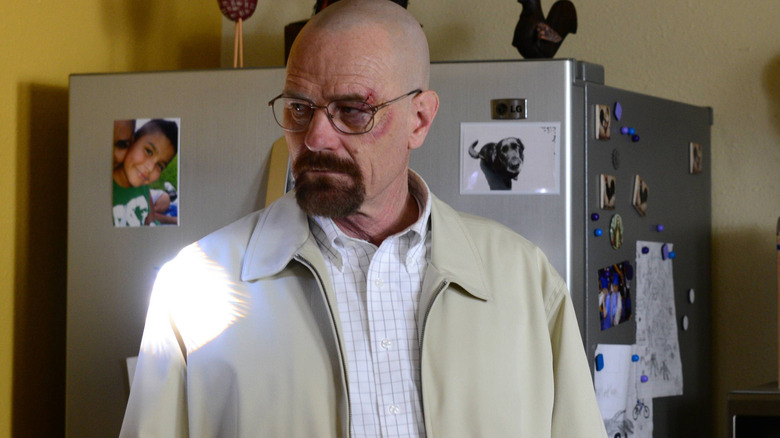The Subtle Character Quirk Bryan Cranston Added To Walter White But Not Heisenberg
Before taking the role of Walter White in "Breaking Bad," Bryan Cranston was best known for playing Hal, the hapless dad of four on "Malcolm in the Middle." Cranston's ability to morph a meek high school chemistry teacher into one of the country's most dangerous criminals was at the epicenter of "Breaking Bad," a transformation creator Vince Gilligan has often likened as a gradual move from "Mr. Chips" to "Scarface."
Cranston won five Emmys for outstanding lead actor in a drama series for playing Walt, including three in a row. Bill Cosby is the only other actor to win that same award in three straight years, for his performance in "I Spy" from 1966 through 1968 (via IMDb). Cranston's slow evolution of the character throughout the 62 episodes of "Breaking Bad" came through a combination of changes in dress, mood, language, demeanor, behavior, and co-conspirators/henchmen, some barely noticeable and some quite plainly obvious. Walt even starts to use the alias "Heisenberg" — the last name of a German physicist — as he becomes more Scarface-like and the series winds toward its violent conclusion.
But there is one specific physical change Cranston made as Walter White fades away and the black-hatted Heisenberg takes his place.
Cranston changed Walt's posture as he morphed into Heisenberg
Along with the other changes in his manner and his life, as Walter White devolved into Heisenberg, Bryan Cranston also literally changed the way he carried himself.
With his increasing confidence and growing criminal resume comes an adjustment to his character's posture. In an interview for "New Mexico in Focus," Cranston told host Matt Grubs that he very purposefully began to carry himself differently as his iconic character loses touch with the mild-mannered chemistry teacher we meet in the "Breaking Bad" pilot when he gets his diagnosis of terminal lung cancer.
"I wanted Walter to feel, like, the weight of the world," Cranston said. "So his posture was kind of round-shouldered, and his head was kind of bowed from the weight of this tension and depression that he was carrying with him ... He is more upright now. When he took on this persona of Heisenberg, where he is this desperate desperado, his shoulders are back, his posture is much greater, because he felt more comfortable and more in control and powerful and I think I just wanted to have that manifest in his stateliness."
It's a very subtle change, but when combined with all the other changes Cranston and the showrunners make to the character, it helps illustrate the purposeful transformation of an innocent family man to an international drug kingpin and mass murderer.

